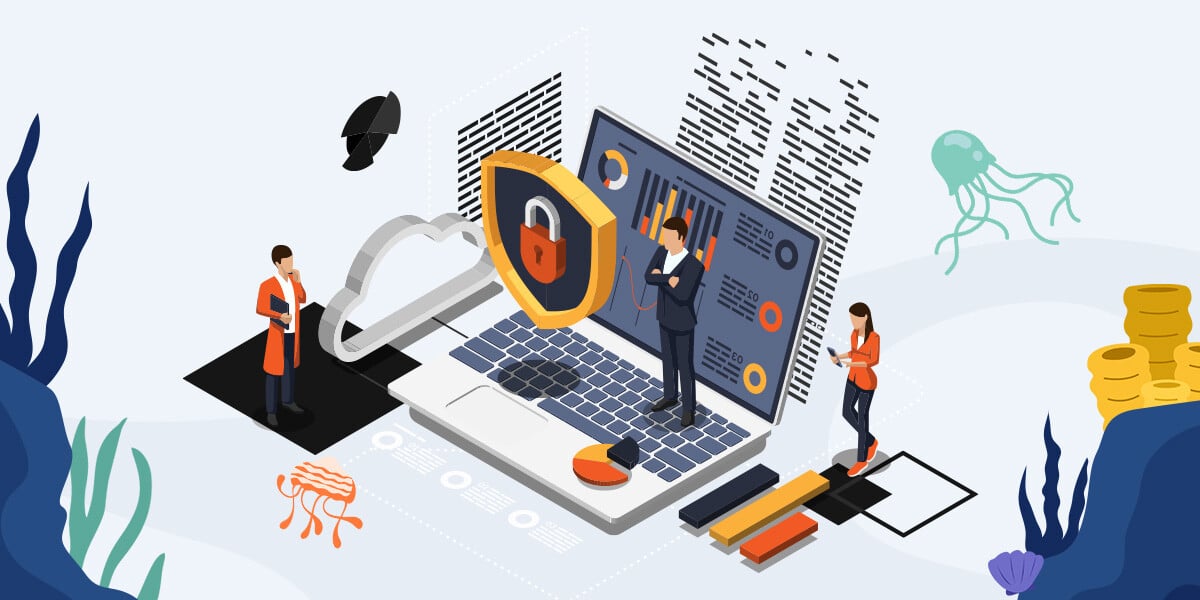


Cybersecurity Risks of Working From Home



While flexible work from home (WFH) models offer undeniable advantages, they also create multiple opportunities for cyber threats to infiltrate critical systems. The modern workplace now demands a stronger, strategic approach to cyberattacks and vulnerability analyses that extend beyond office walls.
With a rising number of employees accessing critical systems from personal devices and home networks, the potential for breaches has increased significantly. Taking proactive measures to reinforce security in a work-from-anywhere model is imperative.
Common Remote Work Security Risks
Distributed workforces create more access points, giving attackers greater opportunity to exploit weak links. Personal devices, unsecured Wi-Fi and outdated software are prime entry points for malware, ransomware and unauthorized intrusions. Threat actors continuously adapt, launching increasingly sophisticated attacks that prey on remote workers’ habits and limited oversight.
The shift to remote work has led to a rise in specific security threats that require immediate attention:
- Insider threats and social engineering attacks: Remote environments reduce direct supervision, creating conditions where insider threats can flourish. Whether through negligence or malicious intent, compromised credentials and improper data handling expose organizations to significant risk. Social engineering tactics, such as baiting or pretexting, also exploit the relative isolation of remote employees to manipulate their trust.
- Third-party risks in remote work environments: Employees often rely on a web of third-party applications and services to perform their duties. Some of these tools may lack enterprise-grade security, introducing vulnerabilities into company networks.
- Increase in phishing attacks targeting remote employees: Phishing remains one of the most effective tools in a hacker’s arsenal. Bad actors can send emails that closely mimic internal communications or trusted vendors, making them harder to detect. Successful phishing attempts can lead to credential theft, unauthorized access and costly breaches.
- AI-driven attacks: Cybercriminals are increasingly using generative AI tools to scale and personalize their attacks. AI-driven phishing campaigns and deepfake communications are more sophisticated and harder to detect for remote workers who may lack strong working relationships with other colleagues to detect subtle differences in language and mannerisms.
Key Strategies to Mitigate Remote Work Security Risks
By implementing layered security strategies tailored to remote environments, businesses can significantly reduce WFH security risks, maintain control over sensitive data and trust among customers and partners.
Building a Secure Remote Work Infrastructure
Some best practices for safeguarding a remote work infrastructure include:
- Deploying reliable VPNs: Well-configured virtual private networks (VPNs) are essential for encrypting internet traffic and ensuring secure connections between remote employees and corporate systems.
- Endpoint protection strategies: VPNs are insufficient if endpoints such as laptops, tablets and smartphones lack protection. Organizations should deploy advanced endpoint security solutions to secure devices, detect malware in real time and prevent unauthorized access to the network.
- Implementing zero trust frameworks for enhanced security: A zero trust security model assumes no device or user is trustworthy by default. This approach ensures that all access requests from remote employees or internal systems are continuously verified before granting access to sensitive resources.
- Leveraging secure file sharing and collaboration tools for remote teams: Tools like file-sharing platforms, video conferencing software and chat applications are essential for remote work. Organizations should rely on tools that offer enterprise-grade security features such as end-to-end encryption, granular access controls and real-time monitoring capabilities to prevent sensitive data from falling into unauthorized hands.
Enhancing Employee Cybersecurity Awareness
Security-conscious teams are the main defense against cybercriminals, particularly in environments where direct oversight is limited. Businesses can implement these techniques to improve awareness:
- Targeted simulation training to prevent phishing: Regular phishing simulation exercises teach employees to recognize suspicious emails, links and text messages and practice appropriate responses.
- Effective password hygiene practices and multi-factor authentication: Weak passwords are a significant entry point for cybercriminals. Encouraging employees to use complex, unique passwords for each account and enabling multi-factor authentication (MFA) can significantly reduce the chances of unauthorized access.
- Comprehensive social engineering defense techniques: Employees should learn to identify psychological manipulation attempts, whether they arrive via email, phone or collaboration tools. Understanding common social engineering tactics — such as urgency scams, impersonation attempts, pretexting or baiting — dramatically improves organizational defense.
Tools and Policies to Prevent Data Breaches and Strengthen Security Responses
Beyond infrastructure and comprehensive training, organizations need to implement smart tools and enforce clear policies to monitor access, identify anomalies and limit exposure to external threats.
Remote Access Monitoring and Threat Detection
It’s crucial to constantly monitor network traffic and employee activity for any signs of unauthorized access or malicious behavior in a remote work environment. Without visibility into who’s connecting and what they’re doing, organizations expose themselves to silent and often devastating breaches. Implementing security information and event management (SIEM) systems can automate this process and flag irregularities in real time.
Implementing insider threat management policies and protocols is also critical. Whether intentional or accidental, insider threats can be more damaging than external attacks. Monitoring employees' access to sensitive data and establishing clear protocols for when and how to access it reduces this risk.
Software Updates and Third-Party Risk Management

Outdated software and unchecked third-party dependencies are among the most exploitable gaps in a remote-first environment. Enforcing timely, automated updates across all systems — including operating systems, productivity apps and antivirus programs — prevents attackers from exploiting known vulnerabilities.
Vetting and managing external tools is equally vital. Every third-party integration introduces potential attack vectors. Organizations should assess external software for security vulnerabilities, ensure it meets compliance requirements and monitor its usage for any signs of misuse.
Secure Collaboration and Communication Practices
Remote teams rely on digital communication and collaboration tools to stay connected and productive. However, these tools can be vulnerable to cyberattacks if not properly secured. Selecting tools with advanced security features helps prevent access and interception of sensitive information by unauthorized parties.
IT teams should configure file-sharing tools used by remote teams to encrypt sensitive data in transit and at rest. Businesses can also reduce the risk of data breaches during file exchanges by using secure cloud storage options and enforcing proper access controls.
Preparing for Data Breaches and Ensuring Future Security
Despite taking extensive measures to secure remote work environments, no system is impenetrable. It is prudent to have contingency plans to quickly respond to security breaches and minimize potential damage.
Effective Data Breach Response Plans
Businesses should establish a clear incident response plan that outlines the steps to take when a data breach occurs. This plan often entails notifying affected individuals, containing the breach and working with cybersecurity experts to assess and remediate vulnerabilities.
Communication with other key stakeholders is also crucial after a breach. It is good practice to inform customers, employees and regulators about the breach’s nature, its impact and the steps you are taking to address it. Transparency helps rebuild trust, avoid legal liabilities and demonstrate a commitment to security.
Long-Term Security Best Practices
In addition to immediate breach response, organizations ought to focus on long-term security practices to prevent future incidents. For instance, conducting regular vulnerability assessments of user behaviors, penetration testing and security audits enables organizations to identify and address emerging risks.
Continuous employee training is also essential to address evolving threats. Regular updates on new types of phishing scams, malware and ransomware, and scenario testing help employees stay vigilant and reduce human error.
Protecting Your Remote Workforce With Phin Security
Securing a remote workforce requires a multi-layered cybersecurity approach that blends infrastructure, human behavior, advanced tools and proactive planning. As cybersecurity and threat detection grow more complex, having a partner with deep expertise in remote workforce protection becomes a critical differentiator.
At Phin Security, we help organizations mitigate the human layer of risk, where most breaches begin. Our platform delivers advanced behavioral training and social engineering simulations that empower employees to confidently recognize and deflect cyber threats. We work closely with your team to reinforce a culture of security awareness that scales with your business.
Contact Phin Security today to learn more about strengthening your cyber defenses, improving cybersecurity awareness across your organization and operating in today’s hybrid work landscape.






Leave a comment: